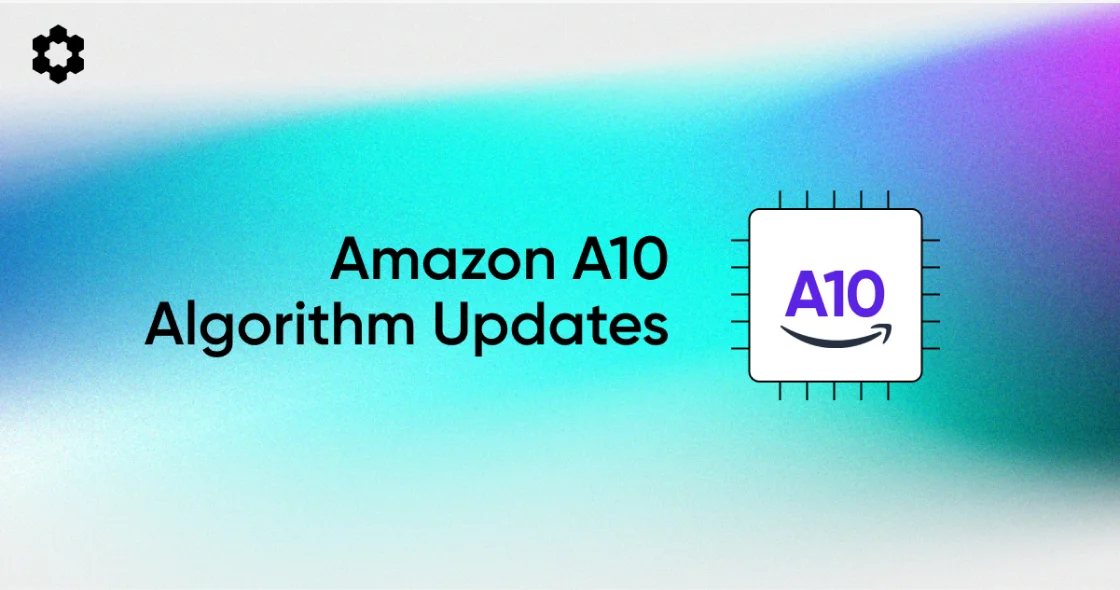The ecommerce landscape continues to rapidly evolve. And if sellers want to achieve visibility and drive sales, they need to keep pace.
One of the most critical updates in recent ecommerce history? Amazon’s new A10 algorithm.
The A10 determines which products to show — and which order to show them — in search results on the platform. It’s a proprietary ranking algorithm, designed to evaluate relevance, customer preferences, sales history, and performance metrics to give users the most pertinent results.
While Amazon hasn’t released a comprehensive, publicly accessible outline of A10, sellers have discovered some key details through trial and error. Let’s explore what sellers have learned so far — and how to use these learnings to thrive in the competitive marketplace.
What Do Amazon A10 Algorithm Updates Mean for Sellers?
The A10 algorithm has revolutionized the way search results are delivered to users. With a focus on personalization and relevance, A10 aggregates customer preferences and behaviors to provide a more enriching search experience.
For Amazon sellers, the A10 algorithm provides an opportunity to enhance their product listings and increase sales.
To optimize for the new algorithm, sellers must concentrate on improving their reputation, product quality, click-through rates, and driving traffic from external websites and social media. The incorporation of reviews, ratings, and social media mentions into the algorithm can also positively impact sales.
By prioritizing these factors, sellers can gain an edge in the competitive Amazon marketplace and increase their revenue.
What’s New With Amazon A10?
While each algorithm update has brought improved features to the platform, the A10 update is something special. Here’s a breakdown of the new sales-boosting tools, resources, and metrics available with A10.
New-To-Brand Metric
The A10 update introduced the “New-To-Brand” metrics, which measures the percentage of Amazon orders from customers who haven’t purchased from a particular brand in the past 12 months. With this metric, Amazon identifies products that are bringing in new customers and gives those brands a ranking boost.
Purchased Together Feature
The brand new “Purchased Together” feature highlights products that are commonly purchased alongside the item a customer is currently viewing. This is a major boon for sellers, as it can increase the visibility of related products and improve cross-selling opportunities.
Relevance and Conversion Rates
To further their mission of delivering the most relevant search results to customers, Amazon emphasized relevance and conversion rate metrics in the A10 update. Now more than ever, sellers need to focus on optimizing their product listings, product descriptions, and enhanced content to drive relevance and conversions.
Sales Velocity and Performance Metrics
The marketplace behemoth will always reward consistent sales and positive customer experiences. And the A10 update places even greater weight on overall performance, so sellers should strive to create a steady stream of sales and maintain strong performance metrics, such as order defect rate, late shipment rate, and response time to customer inquiries.
Customer Satisfaction and Reviews
The A10 algorithm update also places more significance on customer satisfaction metrics, including product reviews and ratings — metrics that can significantly impact sales and repeat business. Wherever possible, sellers should encourage customers to leave genuine reviews and promptly address any negative feedback to maintain a positive reputation on the platform.
Sellers can also use the new “Contact Customer” feature to communicate directly with consumers who leave a 1-3-star review. In many cases, offering a refund or hearing a customer out can resolve a complaint — and avoid damage to your brand reputation.
Advertising and Sponsored Products
Sponsored product ads have become an integral part of Amazon’s revenue stream. Recent updates to the A10 algorithm have led to increased ad placements and visibility, providing sellers with more opportunities to promote their products. Utilizing Amazon Advertising campaigns strategically can help sellers boost their rankings and drive targeted traffic to their listings.
How Can Sellers Stay Ahead of the Amazon A10 Algorithm Updates?
For sellers, staying ahead means staying informed. Here are a few tips for staying at the front of the pack on Amazon.
- Monitor algorithm changes. Regularly check Amazon’s seller forums, and keep an eye out for any announcements or updates about the algorithm.
- Optimize product listings. Conduct thorough keyword research to identify high-relevance, low-competition keywords to include in titles, bullet points, and descriptions. Listings should be engaging, natural, and highly relevant to customers’ needs. Also, include high-quality images, detailed descriptions, and customer reviews in your product listings. To improve click-through and conversion rates, ensure your images accurately showcase the product from different angles.
- Maintain competitive pricing. Review your — and your competitors’ — pricing strategies regularly to ensure you’re staying competitive with other sellers in your category.
- Garner customer reviews through excellent customer service. Promptly address customer inquiries, resolve issues, and provide exceptional service to encourage positive reviews and improve your performance metrics.
The ecommerce world is nothing short of a battleground for visibility and customer engagement. And the sellers who outperform their competition have a knack for staying ahead of the rapid changes in technology and consumer demands.
Simplify Your Success
The Amazon A10 algorithm update is already shaking things up in the marketplace. But it’s never too late to learn about how these upgrades can impact your business or explore Carbon6’s suite of game-changing tools that can help your business stay on top.
Plus, download our cheatsheet on the A10 update here.




